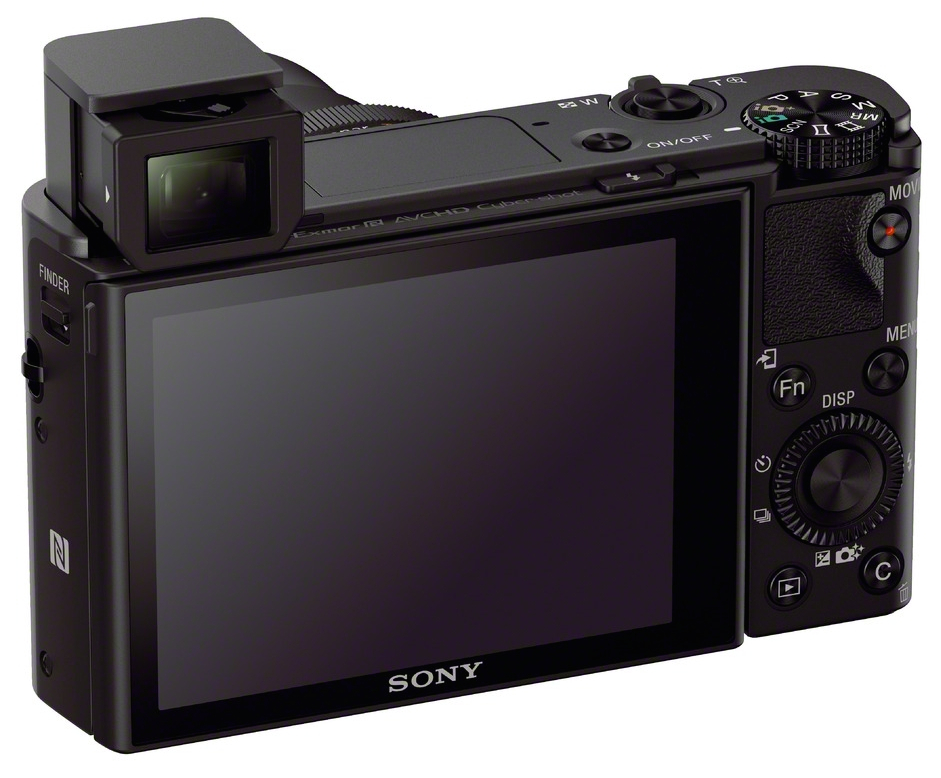The latest Mark III version of the popular Sony RX100 answers virtually the only criticism of the first two iterations of the camera―the lack of a built-in viewfinder. With its 1in sensor, huge in comparison with those in most size-competitor devices, and fast zoom lens, the RX100 was always best bang-for-buck you could get in the pocket sector. Version II, which came out less than a year ago, did offer the possibility of adding an EVF to the hotshoe (at a cost not much less than that of the camera itself) but this expensive excrescence nullified the main benefit of the RX100, its small size and pocketability.
I have always taken the view that I would be happy to lose the ubiquitous pop-up flash in favour of a viewfinder and, at long last here I have my answer in the Mark III. But we haven’t actually lost the flash for it replaces the hotshoe which, I suspect, some enthusiast photographers will not like. For the majority, though, this little camera packs proven performance and versatility into the smallest possible configuration. It is all the more amazing when you compare the RX100 with the enormous, zoomed-to-death RX10, a camera that houses exactly the same sized 1in size as its wee brother. The 20 MP sensor in the RX100 MkIII has been upgraded with the same Bionz X chip that graces the full-frame A7 and A7r.
The Mark III also gets a faster zoom lens. With a bright aperture range of f/1.8-2.8, this lens tops out at 70mm compared with the Mark II’s 100mm. But it has the advantage of starting out at a considerably more useful wide angle of 24mm. For me, this 24-70mm range is the sweet spot for a carry-anywhere second camera and will turn the Sony into a perfect little street cam, although the housing is possibly on the small size for many togs.
Pop-up versatility
It is the 1.4-million-pixel viewfinder that is the most important feature of the new RX100 and the one that will prompt wholesale trade-ups and attract yet more photographers to the Sony camp. As far as I know, this is a unique configuration and it is surprising that no other manufacturer has previously hit on this solution. The nearest efforts came from Panasonic with the swivelling-EVF in the GX7 and Leica/Panasonic with the small built-in finder of the C/LF1. Yet this new Sony solution neatly answers my cry for an EVF instead of a pop-up flash and offers us the best of all worlds without compromising the size of the rear screen.
For the past few months I have been looking for a smallish camera with a good quality zoom lens that could be a companion for my brace of Leica Ms. I’ve looked at APS-C, where there is no appreciable weight or bulk saving, and at Micro Four Thirds. There is one MFT camera, the Panasonic GM1, that would fit the bill perfectly—except that it doesn’t have an EVF and cannot even handle an OVF because of the lack of hotshoe.
Now comes another option to add to the list. Despite its smaller 1in sensor, the RX100 has an enviable track record in low-light performance and the image quality is first rate. Add the new viewfinder and take into account the relatively tiny size, and this camera is a strong contender as a go-anywhere second string to a full-frame.
The only snag is the highish $800 price tag. That is definitely into MFT and, even, APS-C compact-system-camera territory. It is, however, a price worth paying for the small size and enviable versatility the RX100 now offers.

